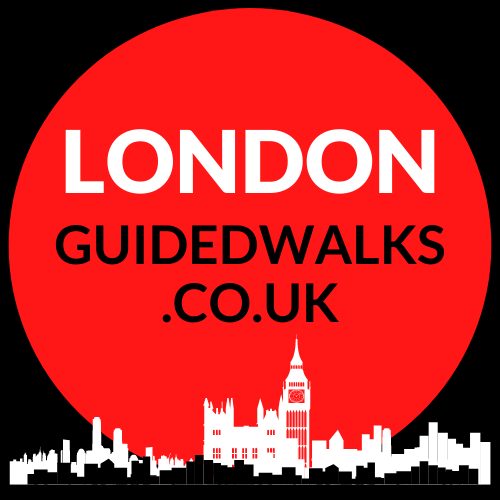
Episode 18: Victorian Photographs
With the invention of photography, who knew it would revolutionise culture and communication? Images of real life could be captured for prosperity and sent across the world. Portraits of royalty and other celebrities, far more accurate than paintings, allowed members of the public to feel that they were viewing these people in the flesh.
In this episode, we are with guest Colin Webb, who helps making history more accessible and telling the stories that we as a culture may have forgotten, and he does this by adding colour to black and white photos.
Listen Now: Apple Podcasts | Spotify |Android | RSS
Get our latest episode in your inbox here
Book a Private Tour

Support us on Patreon from as little as £5.
Gain access to exclusive content including behind the scenes videos, full transcripts, shout outs and mini videotours!
Full Transcript
Hazel Baker: Hello and welcome to our London History Podcast, where we share our love of London, its people, places, and history in 20 minute espresso shot episode served with a dash of personality. I am Hazel Baker Qualified London tour guide and CEO of London Guided Walks, providing private tours, treasure hunts, and live London quizzes to Londoners and visitors alike.
To accompany this podcast. We also have hundreds of London history related blog posts for you to enjoy at londonguidedwalks.co.uk/blog. And it's a week for celebrating as we have hit the amazing milestone of 3000 listeners. Now I am beyond proud and thankful, not only for you, my lovely listeners, but also for our expert guests for sharing their love of London. Now don't forget if you want to be our guest, then please do get in touch via our website, londonguidedwalks.co.uk/podcast.
Don't forget from 4th of July, we will be offering private tours at treasure hunts and live London quizzes to private groups, all COVID-19 secure. And now on with the show.
I have a confession. In my recent folder on my iPhone, I have 64,476 photos. That's not including all the ones that I've taken on my other phones or indeed my camera. 64,476. These are photos i've taken, some with great care and others, admittedly were just quick snapshots, whilst whizzing around the city.
For those of you who've been to Haycock Abby in Wiltshire will already know the first photographic technologies were produced there in the 1830s and 40s by William Henry Fox Talbot. He was a Victorian polymath and frustrated by his inability to paint and draw, I know that feeling, he wanted to find a way to fix images.
Little, did he know that with the invention of photography, it would revolutionise culture and communication in the West for ever. For the first time, images of real life could be captured for prosperity and sent across the world. Portraits of royalty and other celebrities far more accurate than paintings allowed members of the public to feel that they were viewing these people in the flesh.
And how different would it have been if Henry III had seen a fight photo of Anne of Cleves rather than a beautified painting. The dead could be remembered, the fleeting could be fixed. And that's where today's guest comes in.
Cole Webb runs the Facebook page History in Colour, and it's all about making history more accessible and telling the stories we as a culture may have forgotten, and he does this by adding colour to black and white photos.
What we discussed:
- I know when you're adding colour, you try and be historically accurate as possible. But how do you know these colours they would have been wearing?
- One that really shows the depravity is the rat catcher children photo that you did. Yeah. Do you want to tell the listeners how they caught the rats?
- Howdo you choose the images?
- How did you find these stories?
- Historical research in editing
- Free private commissions
- How long does it take if you sat down and put the effort to do an image that isn't of good quality?
- What inspired you to doing the one of tower bridge with the family having making sandcastles?
- And to end Colin, the final picture I want to talk about is a darkened alleyway with houses on either side. And that looked like they're ready to fall apart. Can you tell us a little bit more about that one?
Hazel Baker: Thanks very much for coming on the show, Colin and sharing your love of London history. You are among friends.
So hopefully by now you are itching to see these colourised photos that Colin has done, and you can do that by visiting C. R. Webbs History in Colour Facebook page.
So that's about wraps up for our latest episode of hope. You've enjoyed it. If you haven't already, can I please, please, please ask you to leave a review really, really easy. And I have left simple instructions on the show notes. And for those of you who have already taken the time to write these five star reviews are coming in, I really do appreciate it.
Thanks so much. And don't forget, this is your chance to guide the guides as well. So if there is a subject, an area or particular Londoner or that you want us to cover, then let us to know. And there's a link in the show notes as well for you to do that. And if you are absolutely busting to share your knowledge and love of London, then you need to let us know so you can come on just like Cole.
And of course, once again, I'm going to sound like a broken record in this digital age, but link is in the show notes. And before you ask that's londonguidedwalks.co.uk/podcast. Thanks again and see you next time.
Other Episodes
046 Beer, The Bard & Historic Buildings of Bankside
045 Drawing London's Buildings
042 John Julius Angerstein: The Man Behind the National Gallery
041 London's Medieval Friaries
040 Charles Dickens in Greenwich
038 The Black Death: London's First Plague
037 Bridgerton & Regency London
034 London's Old Shops - Food & Drink
031 Abandoned London Underground Stations
030 Quirky Street Names - Little Britain
029 The Harp maker of Fitzrovia
024 The Walbrook in Roman London
021 London Area Names - Animal Edition
020 The Great Fire of London - How It Began
017 The Proms & The Royal Albert Hall
016 Women in 1920s London (From Cowgirl to Congress)
014 Postcards From London's Past
013 London Statues: Medical Women
012 The Old Operating Theatre Museum
011 London's Coffeehouses and Commerce
009 Music Halls and Cabaret - from yesterday to today
008 The Monument to the Great Fire of London
006 Hockley in the Hole Clerkenwell
Some links contain affiliate links, which means that if you click on one of the product links, we receive a small commission. This helps support our free podcast. Thank you for the support!
Copyright London Guided Walks and Treasure Hunts
